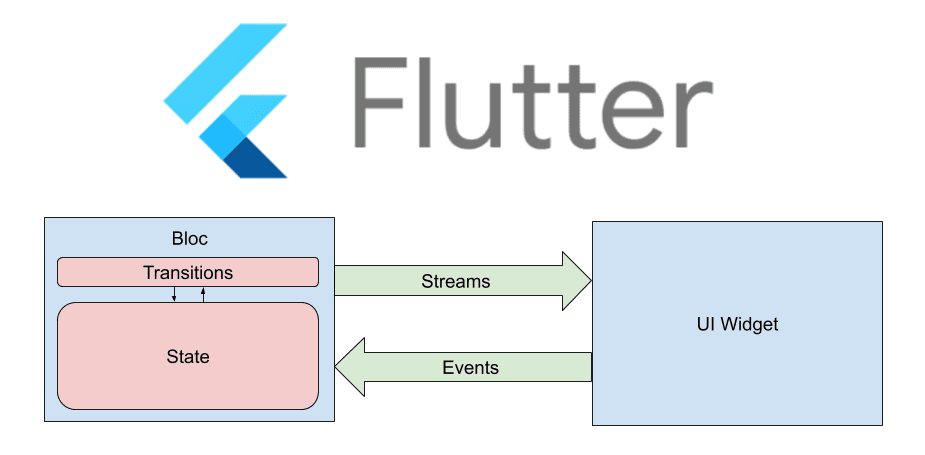Pro Code vs. Low-Code: Which is Better for Your Business?


Introduction
Introduction
Introduction
Introduction
In the evolving landscape of business app development, the debate between pro-code and low-code approaches is more relevant than ever. Each method offers distinct advantages and caters to different business needs. Understanding the nuances of both approaches is crucial for making informed decisions that align with your organization’s goals.
Importance: Choosing the right development method can significantly impact your business’s efficiency, scalability, and overall success. This blog delves into the critical aspects of both pro-code and low-code development, helping you identify the best approach for your specific requirements.
In the evolving landscape of business app development, the debate between pro-code and low-code approaches is more relevant than ever. Each method offers distinct advantages and caters to different business needs. Understanding the nuances of both approaches is crucial for making informed decisions that align with your organization’s goals.
Importance: Choosing the right development method can significantly impact your business’s efficiency, scalability, and overall success. This blog delves into the critical aspects of both pro-code and low-code development, helping you identify the best approach for your specific requirements.
In the evolving landscape of business app development, the debate between pro-code and low-code approaches is more relevant than ever. Each method offers distinct advantages and caters to different business needs. Understanding the nuances of both approaches is crucial for making informed decisions that align with your organization’s goals.
Importance: Choosing the right development method can significantly impact your business’s efficiency, scalability, and overall success. This blog delves into the critical aspects of both pro-code and low-code development, helping you identify the best approach for your specific requirements.
In the evolving landscape of business app development, the debate between pro-code and low-code approaches is more relevant than ever. Each method offers distinct advantages and caters to different business needs. Understanding the nuances of both approaches is crucial for making informed decisions that align with your organization’s goals.
Importance: Choosing the right development method can significantly impact your business’s efficiency, scalability, and overall success. This blog delves into the critical aspects of both pro-code and low-code development, helping you identify the best approach for your specific requirements.
Pro Code Development
Pro Code Development
Pro Code Development
Pro Code Development

What is Pro Code?
Definition: Pro code development refers to the traditional approach of writing software code from scratch. This method involves using programming languages and frameworks to build applications, providing developers with full control over the codebase.
Customization: One of the primary benefits of pro code development is the ability to customize every aspect of the application. Developers can tailor features and functionalities to meet specific business needs, ensuring a high level of precision and performance.
Advantages of Pro Code
Performance: Pro code development allows for optimized performance. Applications can be fine-tuned to operate efficiently, handling complex tasks and large volumes of data with ease.
Complexity Handling: Pro code is ideal for managing intricate functionalities and integrations. It provides the flexibility to create sophisticated systems that can seamlessly integrate with various business processes and technologies.

What is Pro Code?
Definition: Pro code development refers to the traditional approach of writing software code from scratch. This method involves using programming languages and frameworks to build applications, providing developers with full control over the codebase.
Customization: One of the primary benefits of pro code development is the ability to customize every aspect of the application. Developers can tailor features and functionalities to meet specific business needs, ensuring a high level of precision and performance.
Advantages of Pro Code
Performance: Pro code development allows for optimized performance. Applications can be fine-tuned to operate efficiently, handling complex tasks and large volumes of data with ease.
Complexity Handling: Pro code is ideal for managing intricate functionalities and integrations. It provides the flexibility to create sophisticated systems that can seamlessly integrate with various business processes and technologies.

What is Pro Code?
Definition: Pro code development refers to the traditional approach of writing software code from scratch. This method involves using programming languages and frameworks to build applications, providing developers with full control over the codebase.
Customization: One of the primary benefits of pro code development is the ability to customize every aspect of the application. Developers can tailor features and functionalities to meet specific business needs, ensuring a high level of precision and performance.
Advantages of Pro Code
Performance: Pro code development allows for optimized performance. Applications can be fine-tuned to operate efficiently, handling complex tasks and large volumes of data with ease.
Complexity Handling: Pro code is ideal for managing intricate functionalities and integrations. It provides the flexibility to create sophisticated systems that can seamlessly integrate with various business processes and technologies.

What is Pro Code?
Definition: Pro code development refers to the traditional approach of writing software code from scratch. This method involves using programming languages and frameworks to build applications, providing developers with full control over the codebase.
Customization: One of the primary benefits of pro code development is the ability to customize every aspect of the application. Developers can tailor features and functionalities to meet specific business needs, ensuring a high level of precision and performance.
Advantages of Pro Code
Performance: Pro code development allows for optimized performance. Applications can be fine-tuned to operate efficiently, handling complex tasks and large volumes of data with ease.
Complexity Handling: Pro code is ideal for managing intricate functionalities and integrations. It provides the flexibility to create sophisticated systems that can seamlessly integrate with various business processes and technologies.
Low-Code Development
Low-Code Development
Low-Code Development
Low-Code Development

What is Low-Code?
Definition: Low-code development emphasizes visual development with minimal hand-coding. Platforms provide drag-and-drop interfaces and pre-built components, enabling rapid app creation without extensive programming knowledge.
Accessibility: Low-code platforms democratize app development by making it accessible to a broader range of users, including those with limited technical expertise. This approach empowers business users to participate in the development process, fostering collaboration and innovation.
Advantages of Low-Code
Speed: Low-code development significantly reduces time-to-market. Applications can be developed and deployed rapidly, allowing businesses to respond swiftly to market demands and opportunities.
Cost Efficiency: With lower development costs and reduced reliance on specialized coding skills, low-code platforms offer a cost-effective solution for businesses. This approach minimizes the need for large development teams and extensive coding resources.

What is Low-Code?
Definition: Low-code development emphasizes visual development with minimal hand-coding. Platforms provide drag-and-drop interfaces and pre-built components, enabling rapid app creation without extensive programming knowledge.
Accessibility: Low-code platforms democratize app development by making it accessible to a broader range of users, including those with limited technical expertise. This approach empowers business users to participate in the development process, fostering collaboration and innovation.
Advantages of Low-Code
Speed: Low-code development significantly reduces time-to-market. Applications can be developed and deployed rapidly, allowing businesses to respond swiftly to market demands and opportunities.
Cost Efficiency: With lower development costs and reduced reliance on specialized coding skills, low-code platforms offer a cost-effective solution for businesses. This approach minimizes the need for large development teams and extensive coding resources.

What is Low-Code?
Definition: Low-code development emphasizes visual development with minimal hand-coding. Platforms provide drag-and-drop interfaces and pre-built components, enabling rapid app creation without extensive programming knowledge.
Accessibility: Low-code platforms democratize app development by making it accessible to a broader range of users, including those with limited technical expertise. This approach empowers business users to participate in the development process, fostering collaboration and innovation.
Advantages of Low-Code
Speed: Low-code development significantly reduces time-to-market. Applications can be developed and deployed rapidly, allowing businesses to respond swiftly to market demands and opportunities.
Cost Efficiency: With lower development costs and reduced reliance on specialized coding skills, low-code platforms offer a cost-effective solution for businesses. This approach minimizes the need for large development teams and extensive coding resources.

What is Low-Code?
Definition: Low-code development emphasizes visual development with minimal hand-coding. Platforms provide drag-and-drop interfaces and pre-built components, enabling rapid app creation without extensive programming knowledge.
Accessibility: Low-code platforms democratize app development by making it accessible to a broader range of users, including those with limited technical expertise. This approach empowers business users to participate in the development process, fostering collaboration and innovation.
Advantages of Low-Code
Speed: Low-code development significantly reduces time-to-market. Applications can be developed and deployed rapidly, allowing businesses to respond swiftly to market demands and opportunities.
Cost Efficiency: With lower development costs and reduced reliance on specialized coding skills, low-code platforms offer a cost-effective solution for businesses. This approach minimizes the need for large development teams and extensive coding resources.
Key Considerations for Business App Development
Key Considerations for Business App Development
Key Considerations for Business App Development
Key Considerations for Business App Development

Choosing the Right Approach
Business Requirements: Aligning your development method with specific business goals and project scope is essential. Consider the complexity, scale, and desired outcomes of your application when choosing between pro-code and low-code.
Scalability: Evaluate your scalability needs and future growth considerations. Pro code may offer more scalability for complex applications, while low code can quickly scale to meet immediate business needs.

Choosing the Right Approach
Business Requirements: Aligning your development method with specific business goals and project scope is essential. Consider the complexity, scale, and desired outcomes of your application when choosing between pro-code and low-code.
Scalability: Evaluate your scalability needs and future growth considerations. Pro code may offer more scalability for complex applications, while low code can quickly scale to meet immediate business needs.

Choosing the Right Approach
Business Requirements: Aligning your development method with specific business goals and project scope is essential. Consider the complexity, scale, and desired outcomes of your application when choosing between pro-code and low-code.
Scalability: Evaluate your scalability needs and future growth considerations. Pro code may offer more scalability for complex applications, while low code can quickly scale to meet immediate business needs.

Choosing the Right Approach
Business Requirements: Aligning your development method with specific business goals and project scope is essential. Consider the complexity, scale, and desired outcomes of your application when choosing between pro-code and low-code.
Scalability: Evaluate your scalability needs and future growth considerations. Pro code may offer more scalability for complex applications, while low code can quickly scale to meet immediate business needs.
Performance and Customization Needs
Performance and Customization Needs
Performance and Customization Needs
Performance and Customization Needs
Performance Requirements
Critical Applications: For high-performance applications that require precision and robustness, pro code development is often the best choice. It allows for custom optimizations tailored to specific performance requirements.
User Experience: Balancing user experience requirements with the capabilities of your development approach is crucial. Pro code offers detailed control over UX elements, while low code provides rapid iterations and user feedback integration.
Performance Requirements
Critical Applications: For high-performance applications that require precision and robustness, pro code development is often the best choice. It allows for custom optimizations tailored to specific performance requirements.
User Experience: Balancing user experience requirements with the capabilities of your development approach is crucial. Pro code offers detailed control over UX elements, while low code provides rapid iterations and user feedback integration.
Performance Requirements
Critical Applications: For high-performance applications that require precision and robustness, pro code development is often the best choice. It allows for custom optimizations tailored to specific performance requirements.
User Experience: Balancing user experience requirements with the capabilities of your development approach is crucial. Pro code offers detailed control over UX elements, while low code provides rapid iterations and user feedback integration.
Performance Requirements
Critical Applications: For high-performance applications that require precision and robustness, pro code development is often the best choice. It allows for custom optimizations tailored to specific performance requirements.
User Experience: Balancing user experience requirements with the capabilities of your development approach is crucial. Pro code offers detailed control over UX elements, while low code provides rapid iterations and user feedback integration.
Development Flexibility and Control
Development Flexibility and Control
Development Flexibility and Control
Development Flexibility and Control
Flexibility in Development
Adaptability: Both pro-code and low-code offer different levels of adaptability. Pro code is highly flexible, allowing for comprehensive modifications. Low-code, on the other hand, enables quick adaptations to changing requirements and market conditions.
Control Over Features: Managing feature development and iterations is more controlled in pro code. Low-code platforms, however, offer quicker deployment of new features and updates.
Flexibility in Development
Adaptability: Both pro-code and low-code offer different levels of adaptability. Pro code is highly flexible, allowing for comprehensive modifications. Low-code, on the other hand, enables quick adaptations to changing requirements and market conditions.
Control Over Features: Managing feature development and iterations is more controlled in pro code. Low-code platforms, however, offer quicker deployment of new features and updates.
Flexibility in Development
Adaptability: Both pro-code and low-code offer different levels of adaptability. Pro code is highly flexible, allowing for comprehensive modifications. Low-code, on the other hand, enables quick adaptations to changing requirements and market conditions.
Control Over Features: Managing feature development and iterations is more controlled in pro code. Low-code platforms, however, offer quicker deployment of new features and updates.
Flexibility in Development
Adaptability: Both pro-code and low-code offer different levels of adaptability. Pro code is highly flexible, allowing for comprehensive modifications. Low-code, on the other hand, enables quick adaptations to changing requirements and market conditions.
Control Over Features: Managing feature development and iterations is more controlled in pro code. Low-code platforms, however, offer quicker deployment of new features and updates.
Case Studies and Examples
Case Studies and Examples
Case Studies and Examples
Case Studies and Examples
Case Study 1: Pro Code Development
Approach: A leading financial services company opted for pro code development to build a custom trading platform.
Business Impact: The company achieved optimized performance, tailored functionalities, and seamless integration with existing systems, resulting in improved operational efficiency and customer satisfaction.
Case Study 2: Low-Code Development
Approach: A healthcare provider chose low-code development to create a patient management system.
Benefits Realized: The platform was developed and deployed rapidly, significantly reducing time-to-market and costs. The system was easily scalable to accommodate new features and user requirements.
Comparison: While the pro-code approach offered customized solutions and high performance, the low-code method provided speed, cost efficiency, and flexibility, highlighting the strengths and trade-offs of each approach.
Case Study 1: Pro Code Development
Approach: A leading financial services company opted for pro code development to build a custom trading platform.
Business Impact: The company achieved optimized performance, tailored functionalities, and seamless integration with existing systems, resulting in improved operational efficiency and customer satisfaction.
Case Study 2: Low-Code Development
Approach: A healthcare provider chose low-code development to create a patient management system.
Benefits Realized: The platform was developed and deployed rapidly, significantly reducing time-to-market and costs. The system was easily scalable to accommodate new features and user requirements.
Comparison: While the pro-code approach offered customized solutions and high performance, the low-code method provided speed, cost efficiency, and flexibility, highlighting the strengths and trade-offs of each approach.
Case Study 1: Pro Code Development
Approach: A leading financial services company opted for pro code development to build a custom trading platform.
Business Impact: The company achieved optimized performance, tailored functionalities, and seamless integration with existing systems, resulting in improved operational efficiency and customer satisfaction.
Case Study 2: Low-Code Development
Approach: A healthcare provider chose low-code development to create a patient management system.
Benefits Realized: The platform was developed and deployed rapidly, significantly reducing time-to-market and costs. The system was easily scalable to accommodate new features and user requirements.
Comparison: While the pro-code approach offered customized solutions and high performance, the low-code method provided speed, cost efficiency, and flexibility, highlighting the strengths and trade-offs of each approach.
Case Study 1: Pro Code Development
Approach: A leading financial services company opted for pro code development to build a custom trading platform.
Business Impact: The company achieved optimized performance, tailored functionalities, and seamless integration with existing systems, resulting in improved operational efficiency and customer satisfaction.
Case Study 2: Low-Code Development
Approach: A healthcare provider chose low-code development to create a patient management system.
Benefits Realized: The platform was developed and deployed rapidly, significantly reducing time-to-market and costs. The system was easily scalable to accommodate new features and user requirements.
Comparison: While the pro-code approach offered customized solutions and high performance, the low-code method provided speed, cost efficiency, and flexibility, highlighting the strengths and trade-offs of each approach.
Security and Compliance Considerations
Security and Compliance Considerations
Security and Compliance Considerations
Security and Compliance Considerations
Data Security
Security Protocols: Both pro code and low-code development must address security measures and compliance requirements. Pro code allows for detailed security implementations, while low-code platforms often include built-in security features.
Regulatory Compliance: Ensuring adherence to industry standards and regulations (e.g., GDPR, CCPA) is crucial. Both approaches can meet these requirements, but pro code may offer more granular control over compliance strategies.
Data Security
Security Protocols: Both pro code and low-code development must address security measures and compliance requirements. Pro code allows for detailed security implementations, while low-code platforms often include built-in security features.
Regulatory Compliance: Ensuring adherence to industry standards and regulations (e.g., GDPR, CCPA) is crucial. Both approaches can meet these requirements, but pro code may offer more granular control over compliance strategies.
Data Security
Security Protocols: Both pro code and low-code development must address security measures and compliance requirements. Pro code allows for detailed security implementations, while low-code platforms often include built-in security features.
Regulatory Compliance: Ensuring adherence to industry standards and regulations (e.g., GDPR, CCPA) is crucial. Both approaches can meet these requirements, but pro code may offer more granular control over compliance strategies.
Data Security
Security Protocols: Both pro code and low-code development must address security measures and compliance requirements. Pro code allows for detailed security implementations, while low-code platforms often include built-in security features.
Regulatory Compliance: Ensuring adherence to industry standards and regulations (e.g., GDPR, CCPA) is crucial. Both approaches can meet these requirements, but pro code may offer more granular control over compliance strategies.
Conclusion
Conclusion
Conclusion
Conclusion
Summary
Key Points: Choosing between pro code and low-code development depends on various factors, including business requirements, scalability, performance needs, and development flexibility. Understanding these considerations helps in making an informed decision.
Final Decision: Evaluate your specific business needs and objectives to determine the best approach. Both pro-code and low-code have their unique advantages and can be effectively utilized depending on the project’s demands.
Next Steps: Assess your app development strategies and consider the benefits of both pro code and low-code approaches. By aligning your choice with your business goals, you can leverage the strengths of each method to drive innovation and growth.
Summary
Key Points: Choosing between pro code and low-code development depends on various factors, including business requirements, scalability, performance needs, and development flexibility. Understanding these considerations helps in making an informed decision.
Final Decision: Evaluate your specific business needs and objectives to determine the best approach. Both pro-code and low-code have their unique advantages and can be effectively utilized depending on the project’s demands.
Next Steps: Assess your app development strategies and consider the benefits of both pro code and low-code approaches. By aligning your choice with your business goals, you can leverage the strengths of each method to drive innovation and growth.
Summary
Key Points: Choosing between pro code and low-code development depends on various factors, including business requirements, scalability, performance needs, and development flexibility. Understanding these considerations helps in making an informed decision.
Final Decision: Evaluate your specific business needs and objectives to determine the best approach. Both pro-code and low-code have their unique advantages and can be effectively utilized depending on the project’s demands.
Next Steps: Assess your app development strategies and consider the benefits of both pro code and low-code approaches. By aligning your choice with your business goals, you can leverage the strengths of each method to drive innovation and growth.
Summary
Key Points: Choosing between pro code and low-code development depends on various factors, including business requirements, scalability, performance needs, and development flexibility. Understanding these considerations helps in making an informed decision.
Final Decision: Evaluate your specific business needs and objectives to determine the best approach. Both pro-code and low-code have their unique advantages and can be effectively utilized depending on the project’s demands.
Next Steps: Assess your app development strategies and consider the benefits of both pro code and low-code approaches. By aligning your choice with your business goals, you can leverage the strengths of each method to drive innovation and growth.
Further Insights from Trio.dev
Further Insights from Trio.dev
Further Insights from Trio.dev
Further Insights from Trio.dev
According to Trio.dev, low-code development empowers users to create applications rapidly using visual interfaces and pre-built components, minimizing the need for extensive coding skills. This approach is particularly advantageous for businesses looking to accelerate their digital transformation without heavily investing in large development teams.
Trio.dev also highlights that pro code development is essential for handling complex parts of the product that require high customization and performance. Pro code allows developers to have complete control over the application’s architecture, which is crucial for large-scale and mission-critical applications.
By understanding these insights and integrating them into your decision-making process, you can better navigate the choice between pro-code and low-code development, ensuring your business adopts the most suitable approach for its needs.
Blup Tool Integration
For businesses interested in exploring low-code development, Blup offers an innovative platform that simplifies the app creation process. Blup enables rapid development with its user-friendly interface and powerful features, making it an excellent choice for businesses aiming to accelerate their digital transformation. Learn more about how Blup can revolutionize your app development strategy by visiting their website.
According to Trio.dev, low-code development empowers users to create applications rapidly using visual interfaces and pre-built components, minimizing the need for extensive coding skills. This approach is particularly advantageous for businesses looking to accelerate their digital transformation without heavily investing in large development teams.
Trio.dev also highlights that pro code development is essential for handling complex parts of the product that require high customization and performance. Pro code allows developers to have complete control over the application’s architecture, which is crucial for large-scale and mission-critical applications.
By understanding these insights and integrating them into your decision-making process, you can better navigate the choice between pro-code and low-code development, ensuring your business adopts the most suitable approach for its needs.
Blup Tool Integration
For businesses interested in exploring low-code development, Blup offers an innovative platform that simplifies the app creation process. Blup enables rapid development with its user-friendly interface and powerful features, making it an excellent choice for businesses aiming to accelerate their digital transformation. Learn more about how Blup can revolutionize your app development strategy by visiting their website.
According to Trio.dev, low-code development empowers users to create applications rapidly using visual interfaces and pre-built components, minimizing the need for extensive coding skills. This approach is particularly advantageous for businesses looking to accelerate their digital transformation without heavily investing in large development teams.
Trio.dev also highlights that pro code development is essential for handling complex parts of the product that require high customization and performance. Pro code allows developers to have complete control over the application’s architecture, which is crucial for large-scale and mission-critical applications.
By understanding these insights and integrating them into your decision-making process, you can better navigate the choice between pro-code and low-code development, ensuring your business adopts the most suitable approach for its needs.
Blup Tool Integration
For businesses interested in exploring low-code development, Blup offers an innovative platform that simplifies the app creation process. Blup enables rapid development with its user-friendly interface and powerful features, making it an excellent choice for businesses aiming to accelerate their digital transformation. Learn more about how Blup can revolutionize your app development strategy by visiting their website.
According to Trio.dev, low-code development empowers users to create applications rapidly using visual interfaces and pre-built components, minimizing the need for extensive coding skills. This approach is particularly advantageous for businesses looking to accelerate their digital transformation without heavily investing in large development teams.
Trio.dev also highlights that pro code development is essential for handling complex parts of the product that require high customization and performance. Pro code allows developers to have complete control over the application’s architecture, which is crucial for large-scale and mission-critical applications.
By understanding these insights and integrating them into your decision-making process, you can better navigate the choice between pro-code and low-code development, ensuring your business adopts the most suitable approach for its needs.
Blup Tool Integration
For businesses interested in exploring low-code development, Blup offers an innovative platform that simplifies the app creation process. Blup enables rapid development with its user-friendly interface and powerful features, making it an excellent choice for businesses aiming to accelerate their digital transformation. Learn more about how Blup can revolutionize your app development strategy by visiting their website.
Table of content
© 2021-25 Blupx Private Limited.
All rights reserved.
© 2021-25 Blupx Private Limited.
All rights reserved.
© 2021-25 Blupx Private Limited.
All rights reserved.



















